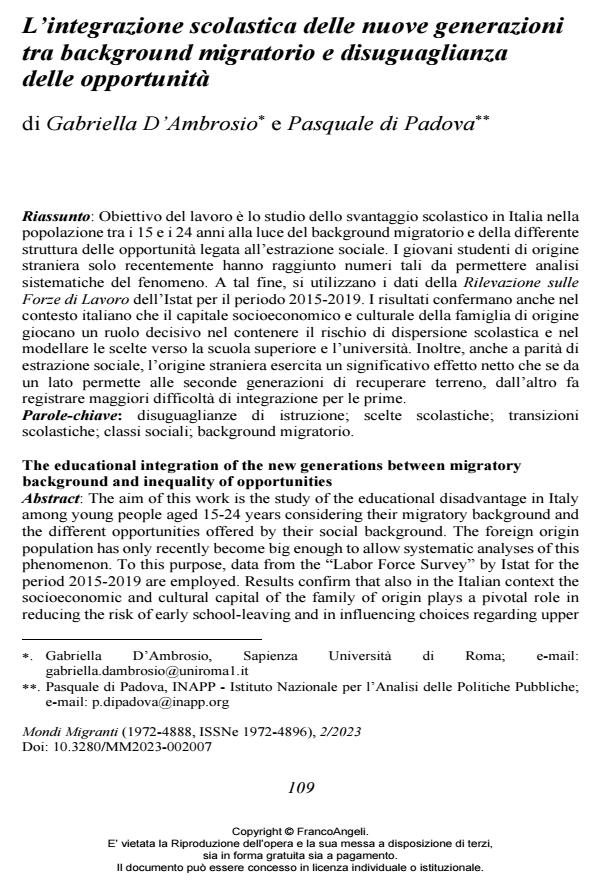The educational integration of the new generations between migratory background and inequality of opportunities
Journal title MONDI MIGRANTI
Author/s Gabriella D’Ambrosio, Pasquale di Padova
Publishing Year 2023 Issue 2023/2
Language Italian Pages 24 P. 109-132 File size 257 KB
DOI 10.3280/MM2023-002007
DOI is like a bar code for intellectual property: to have more infomation
click here
Below, you can see the article first page
If you want to buy this article in PDF format, you can do it, following the instructions to buy download credits

FrancoAngeli is member of Publishers International Linking Association, Inc (PILA), a not-for-profit association which run the CrossRef service enabling links to and from online scholarly content.
The aim of this work is the study of the educational disadvantage in Italy among young people aged 15-24 years considering their migratory background and the different opportunities offered by their social background. The foreign origin population has only recently become big enough to allow systematic analyses of this phenomenon. To this purpose, data from the “Labor Force Survey” by Istat for the period 2015-2019 are employed. Results confirm that also in the Italian context the socioeconomic and cultural capital of the family of origin plays a pivotal role in reducing the risk of early school-leaving and in influencing choices regarding upper secondary school and university. In addition, net of the social class of origin, the migratory background exerts a significant effect for which, while second generations are more similar to natives in educational achievements, the integration of children of immigrants born abroad appears to be more difficult.
Keywords: educational inequality; educational choices; educational transitions; social classes; migrant background.
- Are there equal opportunities? A comparative analysis of first employment among young adults with and without migratory background in Italy Alessandra Di Bello, Alessia De Vito, Alessia Acito, in Rivista Italiana di Economia Demografia e Statistica /2025 pp.115
DOI: 10.71014/sieds.v79i2.361
Gabriella D’Ambrosio, Pasquale di Padova, L’integrazione scolastica delle nuove generazioni tra background migratorio e disuguaglianza delle opportunità in "MONDI MIGRANTI" 2/2023, pp 109-132, DOI: 10.3280/MM2023-002007